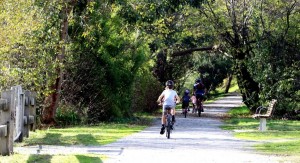Child Sex Abuse and ‘Failure to Protect’ Legislation
May 27, 2016 - 6 minutes read The Victorian Parliament’s Family and Community Development Committee recently produced a document titled ‘Betrayal of Trust’ – which delves into the handling of child abuse incidents by religious and other non-Government organisations. In response to this the State Government has introduced a number of new laws designed to increase the protection of children and to reduce the risk of harm occurring.
The Victorian Parliament’s Family and Community Development Committee recently produced a document titled ‘Betrayal of Trust’ – which delves into the handling of child abuse incidents by religious and other non-Government organisations. In response to this the State Government has introduced a number of new laws designed to increase the protection of children and to reduce the risk of harm occurring.
We have already written a number of articles on these topics – including:
- Fact Sheet summary on child abuse – this is a summary of the 2014 Fact Sheet produced by Ansvar Insurance. It outlines the Victorian Government’s updates to mandatory reporting and protection laws as well as liability, risk management, and action steps.
- Is Your Church a Safe Place? – provides information on how to make your church safe for children and young people.
- Responding to historical allegations – covers how to respond if allegations are made against your organisation for past abuse.
- Reiterating the importance of child protection – revisits the issue and outlines prevention steps and where to go to find out about regulations in your State.
In this article we will explain Victoria’s ‘failure to protect’ laws including how they could affect your organisation.
‘Failure to protect’ criminal offence
This offence was introduced on 1st July 2015 in Victoria. Essentially it states that it is an offence for a ‘person of authority’ within a ‘relevant organisation’ to fail to act in removing or substantially reducing the risk of a sexual offence to a child by an adult person associated with that organisation.
Definitions:
- ‘Relevant organisation’ – refers to an organisation that exercises care or responsibility for children or authority over them. It may include churches and religious bodies as well as schools, childcare centres, health care services, community service organisations, charities, sporting groups and youth organisations.
- ‘Person of authority’ – usually refers to someone who has the ability to make decisions at a managerial level. It may include supervisors, CEOs, school principals, board members and / or religious leaders.
- ‘Child’ – a person under 16 years of age who is under the care of the relevant organisation.
- ‘Person associated with the relevant organisation’ – a person over 18 who is an employee, volunteer, contractor, office holder or manager. In other words it refers to someone who in some capacity provides services to the organisation or assists in doing so. While it does not relate to parents that receive services, it may include parent helpers (such as on youth camps).
How negligence might happen
If it’s known that a person poses a substantial risk to children and that person is not removed and reported to the authorities, or if they are simply moved from one organisation or department to another where they are still in contact with children, then it’s likely that negligence and a ‘failure to protect’ offence has occurred. This might also lead to a denial of insurance if a claim is lodged.
Action steps:
- Always conduct working-with-children and police checks on people who will be involved with children and young people in your organisation, both paid and voluntary.
- Do not employ a person either in a paid or unpaid capacity who has a history of offending or is likely to be a risk to children. This includes parent helpers or volunteers.
- If you know that a person poses a risk to children, that person should be removed immediately and reported to the police for investigation.
- Develop a comprehensive response plan so you know what steps to take if abuse is suspected or reported.
These laws have been designed to protect children and not to arouse unreasonable suspicion, or to expect every person in authority to be aware of every single possible risk in their organisation. The important points are to be diligent in ensuring children are as safe as possible in your organisation, and to have a response plan in place in case of allegations.
More information on the legislation can be found here.
ChildSafe
Don’t forget that ChildSafe membership is free for all CCI insured members. Childsafe provides resources and training materials on child safety, as well as ongoing support for members. You can find out more about ChildSafe here.
Contact CCI for more information on risk management for churches or for info on your insurance policy and / or to lodge a claim. You can also obtain a church insurance quote online through our easy-to-use website form here.
Written by Tess Oliver
Tags: children, childsafe, legal
Recent Comments